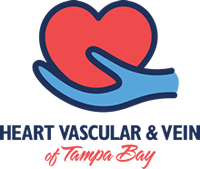Getting an ICD For Tachycardia
Implantable Defibrillator Treatment
GETTING AN ICD IMPLANTED
 The procedure to implant a defibrillator does not require open heart surgery, and most people go home within 24 hours. Before the surgery, medication may be given to make you sleepy and comfortable. Generally, the procedure is performed under local anesthesia. Your doctor can provide more details for your specific situation.
The procedure to implant a defibrillator does not require open heart surgery, and most people go home within 24 hours. Before the surgery, medication may be given to make you sleepy and comfortable. Generally, the procedure is performed under local anesthesia. Your doctor can provide more details for your specific situation.
HOW IS A TRADITIONAL IMPLANTABLE DEFIBRILLATOR (ICD) SYSTEM IMPLANTED?
- A small incision, approximately two to four inches long, will be made in your upper chest area, just below your collarbone.
- One or two leads will be guided through a vein into your heart, and the leads will be connected to the defibrillator.
- The defibrillator settings will be programmed, and the device will be tested to ensure it is working properly to meet your medical needs.
- The defibrillator will be inserted beneath your skin, and the incision in your chest will be closed.
AFTER SURGERY
You will usually stay in the hospital overnight and go home the next day with instructions on caring for your incision. Your doctor will provide more detailed information, but most individuals can expect to gradually return to their everyday activities shortly after the procedure.
After an ICD system implant, your doctor may want to limit how much you move the arm that is closest to your implant site, for a short time after implant. There may be a slight bulge visible under the skin where the device is located. The leads are very thin and will not be visible.
REPLACING YOUR IMPLANTABLE DEFIBRILLATOR
Implantable heart devices are designed to provide therapy for years, but eventually you may need to have your device replaced.
During an ICD replacement procedure, or generator change, your doctor will make a new incision over the old one and then remove the old ICD. He or she will then disconnect and check the leads to determine if replacement of the leads is also necessary; they may or may not be removed.
The leads are connected to the new ICD and its function is tested. The new ICD is then inserted, and the incision is closed. Finally, the device’s therapies are programmed.
When you get your ICD replacement, you may actually receive a newer model with new features and technologies.
When it’s time to replace your ICD, or if your heart condition changes, talk to your doctor about different devices and their features. Only your doctor can determine what’s right for you.
BENEFITS AND RISKS OF ICDS FOR TACHYCARDIA
As with any medical procedure, there are benefits and risks with implantable cardiac device therapy. Talk to your doctor to determine if implantable defibrillator therapy is right for you.
BENEFITS
An ICD is designed to treat dangerously fast heart rates. It continuously monitors your heart and restores your heart to its normal heart rate. It’s like having an emergency response team with you 24 hours a day, 7 days a week.
POTENTIAL RISKS
Risks associated with an ICD implant include, but are not limited to:
- Infection at the surgical site and/or sensitivity to the device material
- Failure to deliver therapy when it is needed
- Receiving extra therapy when it is not needed
After receiving an ICD, you will have limitations with respect to magnetic and electromagnetic radiation, electric or gas-powered appliances, and tools with which you are allowed to be in contact.
Your doctor should discuss all potential benefits and risks with you. Although many individuals benefit from the use of this treatment, results may vary.
Information on this site should not be used as a substitute for talking with your doctor. Always talk with your doctor about diagnosis and treatment information.
